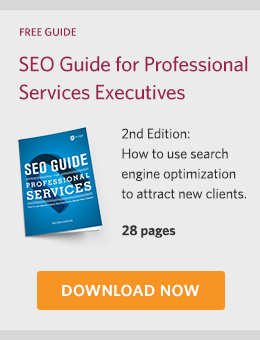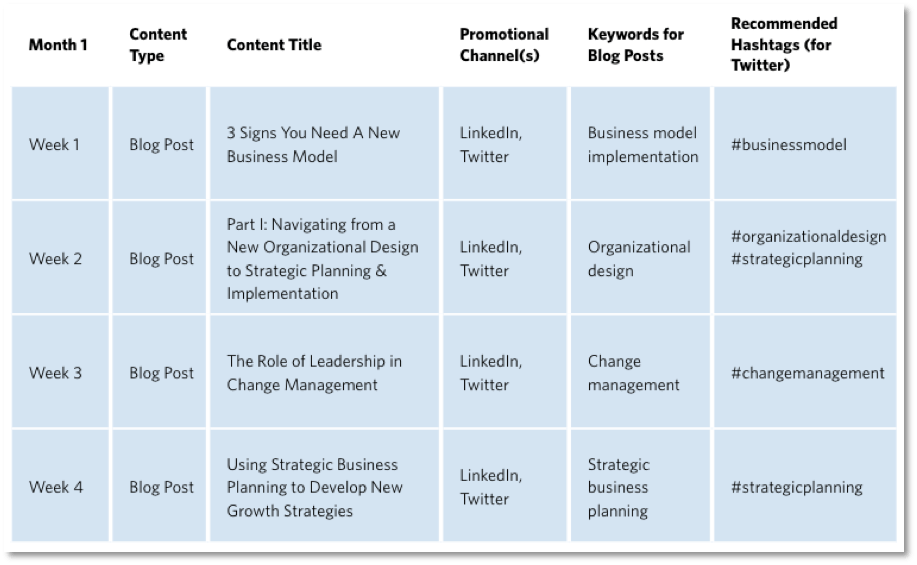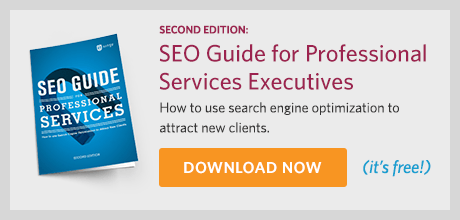To be successful with content marketing, you need to start with strategy. Your content strategy broadly defines the subjects related to your offering that you’ll address to meet your potential clients’ information needs.
Once you’ve honed your strategy, you need the tactical steps to make it happen. That’s the job of the editorial calendar. It’s your road map for content creation throughout the year, getting you from where you are today to where you want to go.
Producing an editorial calendar enables you to plan ahead for industry events and seasonal themes. In this way, it enables you to get maximum leverage out of every piece of content you produce. Also, because you can publish and share the calendar well ahead of when deliverables are due, your marketing team can see the road ahead of them and stay on track.
The editorial calendar is critical because it helps to turn strategy into action.
Why You Need to Add SEO to Your Editorial Calendar
When you’re investing time and resources into content creation, you want to maximize your return on investment. And there is a “known known” about content. If your audience cannot find your content, it will not produce results.
It follows that your content must be easy for potential clients to find, including those unfamiliar with your firm. So, when a prospect types a phrase related to your firm’s offering into Google or another search engine, you want your content to appear prominently in the results.
 This is why search engine optimization (SEO)—making your content favorable to the search engine algorithms—is critical. What are SEO algorithms? They are elaborate recipes that include over two hundred ingredients, which determine websites’ rankings in the search engine results.
This is why search engine optimization (SEO)—making your content favorable to the search engine algorithms—is critical. What are SEO algorithms? They are elaborate recipes that include over two hundred ingredients, which determine websites’ rankings in the search engine results.
SEE ALSO: SEO and Professional Services Marketing: What Every CEO Should Know
While the specific algorithm components are not published, there are a couple of guiding principles for gaining better rankings. To understand them, it helps to think about the search engine’s goal — to direct users to relevant, quality information.
Because of this objective, search engines assess user satisfaction with the pages they direct them to. They do so by measuring the time someone stays on a page. So, one priority for SEO is to ensure visitor engagement by producing superior, unique content that’s useful to your audience.
Another algorithm ingredient is keywords or, more commonly, keyword phrases. These are the verbal anchors that alert the search engines to your content’s subject matter. To rank better in the search results, you should include keyword phrases in your content that a potential client might type into a search engine.
How to Incorporate Keywords
You’ll need to research keyword phrases that your targeted web visitors would use when exploring topics related to your services.
Once you have a list, take each keyword phrase and select content titles that address your audience’s interests and would naturally use those words. Assign a keyword to each piece of content that you plan to create.
Also, since hashtags are the keywords of Twitter, select some appropriate ones to use when tweeting to promote your content. Include those in your editorial calendar as well.
An editorial calendar that includes titles, keywords and hashtags might look something like this:

How should you use these keywords to get found in the search engines?
When you create a blog post, write for your audience first. Remember, engagement is a large part of the search engine algorithm. Then, review the piece to make sure you’ve included the keyword two to three times.
Warning: don’t overdo it.
The old days of keyword stuffing, where the philosophy was “the more, the better,” are over. Google will penalize you for this. And so will your clients. No one wants to read unnatural, stilted articles.
Since Google is getting smarter and now recognizes synonyms and similar phrases, it’s easier than ever to create content that’s both reader- and SEO-friendly.
Your editorial calendar should also include gated pieces of content—premium offerings for which potential clients have to register. These might include e-books, white papers and guides. A good rule is to use the keyword in the title of the guide, for example, and in the landing page that promotes it.
Getting the Best Results from Keywords
Keywords are an essential component of your content marketing plan. The more people you can attract to your website, the more leads you’re likely to generate.
We recommend that you analyze how each of your keywords is performing on a quarterly basis. How much traffic are they generating? Do some keyword searches produce higher lead conversion rates than others?
Also, continue your keyword research. The concerns of your audience and the words that they use are dynamic. In addition, your business changes. As your strategy or offering evolves, so do the keywords you need to use to attract the right web visitors—those who are most likely to transform into clients.
Additional Resources:
- Download Hinge’s Content Marketing Guide for Professional Services Firms for more tips on creating content that builds credibility and demonstrates expertise.
- Get a copy of our Online Marketing for Professional Services book to learn techniques that will generate more leads and increase awareness of your firm.
How Hinge Can Help:
Hinge has developed a comprehensive plan, The Visible Firm℠ to address these issues and more. It is the leading marketing program for delivering greater visibility, growth, and profits. This customized program will identify the most practical offline and online marketing tools your firm will need to gain new clients and reach new heights.


